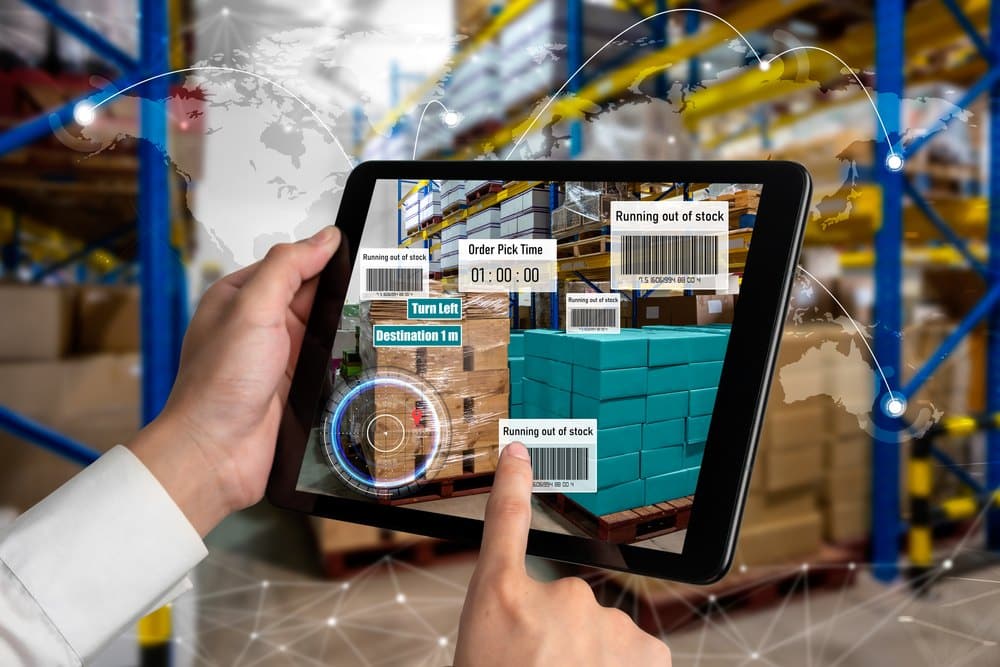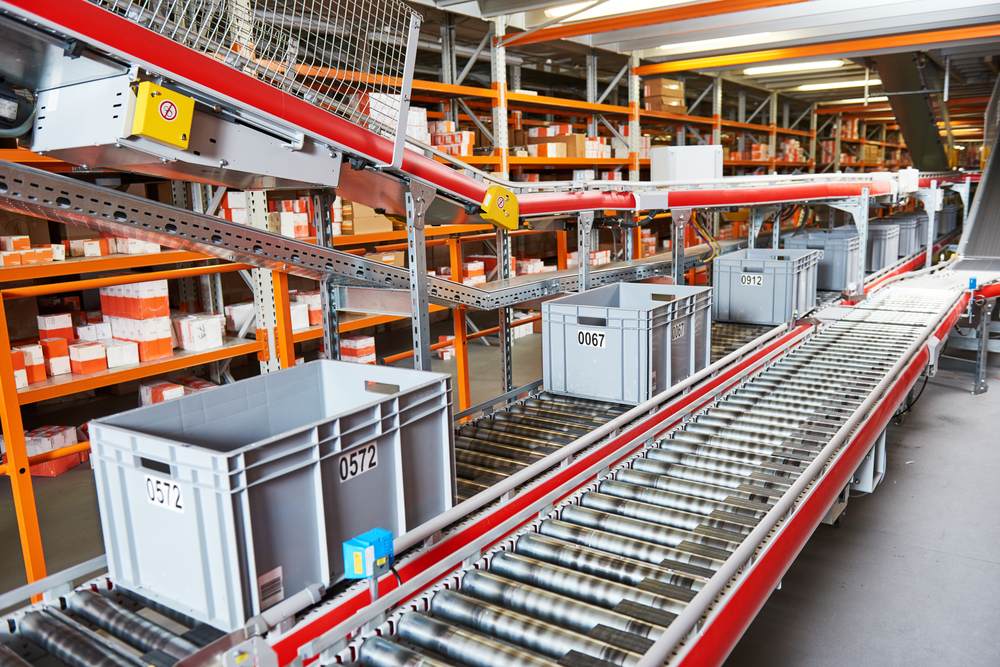Are you concerned about keeping up in a competitive environment and want to know how smart technology may help? Smart warehouse technology is changing the way warehouses operate. With smart technologies, your warehouse can manage its inventory more efficiently and improve its overall productivity.
In this article, we will explain what smart warehouse technology is and give examples of how different smart warehouse technologies can benefit warehouses.
What Is Smart Technology?
Smart technology is a broad term that describes “intelligent” devices and applications. Smart devices connect to the internet, allowing them to communicate with each other. Operators can monitor these devices remotely. Smart technology can also refer to automated processes like robotics or artificial intelligence (AI).
Artificial intelligence is a powerful technology that enables machines to learn from large datasets and adapt their decisions accordingly. You can use AI to analyze data quickly, identify patterns in customer behavior, and optimize warehouse operations.
Further, machine learning combines with AI to improve automated and complex tasks over time. The technology can help you develop more efficient warehouses with fewer errors and faster delivery times.
Examples of Smart Warehouse Technologies
No matter your industry, various smart warehouse technologies exist to improve the efficiency and accuracy of warehouse operations. Using smart warehouse technology, you can become more competitive. These intelligent devices improve productivity. The following list will help you understand how to take advantage of a smart warehouse system.
Warehouse Management Systems (WMS)

A critical smart warehouse technology is a well-implemented warehouse management system. A WMS handles tasks like inventory tracking and order fulfillment. It also helps you plan for future demand, optimize the use of space, and reduce labor costs.
The core components of a WMS include data collection systems, software applications, and hardware. Furthermore, warehouse management systems can provide real-time updates on the whereabouts of products and materials, allowing your managers to make smart decisions based on data.
Radio Frequency Identification (RFID)
Using radio frequency identification tags and readers, you can use smart warehouse technology to track the location of products, containers, and pallets.
The technology uses electromagnetic fields to identify and track objects automatically. RFID uses embedded tags with an electronic chip that contains information about the product. An RFID reader detects and sends the data to a warehouse management system.
RFID streamlines picking processes by automatically identifying inventory items so that warehouse staff can quickly locate items.
Automated Storage and Retrieval Systems (ASRS)
Automated storage and retrieval systems are smart warehouse technologies that use machines like automated guided vehicles to store and retrieve products. These machines have sensors to identify the location of products in the warehouse. They use smart algorithms to determine the best way to move and store items.
ASRS is highly efficient and precise, drastically lowering labor costs. Additionally, it allows for increased inventory accuracy, improved safety, and faster order fulfillment.
Voice-Enabled Technology
Voice-enabled technology uses voice recognition software to allow warehouse staff to locate, pick, and pack items quickly. The technology uses a system to let workers give verbal commands instead of manually entering data.
Voice-enabled systems can increase order accuracy and reduce training time for new employees. Lastly, this technology eliminates the use of paper documents, reducing the amount of paper used in warehouses.
Smart Labels and Sensors
Smart labels and sensors can track the location and condition of products as they move through the warehouse. The labels and sensors attach to each product and communicate with a warehouse management system, providing real-time information about the location of items, temperature, and other environmental conditions.
Smart Conveyors
Smart conveyors sort items quickly and without error. The conveyors use sensors to detect sizes, shapes, and weights. Items then automatically route to the correct destination.
The technology increases efficiency by reducing manual sorting tasks. Consider using smart conveyors as a part of your smart warehouse system to save time and money.
Smart Shelving Systems
Smart shelving systems monitor the location, quantity, and type of items stored on shelves. The smart shelving system can alert managers when inventory runs low, ensuring that shelves remain stocked.
Smart Packing and Shipping Systems
Smart packing and shipping systems utilize smart algorithms to create efficient packing and transportation solutions. The system can automatically calculate the optimal box size for items and organize them in a way that saves space. Smart packing systems also provide real-time data, such as parcel weight and shipping costs, helping warehouses manage their inventory more effectively.
Mobile Computing Devices
Mobile computing is a critical aspect of any effective smart warehouse system. Devices such as tablets and smartphones allow warehouse staff to access data on the go. These devices enable workers to quickly look up product information, check inventory levels, and receive immediate notifications about new orders.
Virtual Reality (VR)
If you decide to use virtual reality in your warehouse, you can create a 3D model of your warehouse and generate simulations to determine the best way to store and move items.
The technology allows you to identify potential issues before they happen. Are you planning to redesign your warehouse layout? Virtual reality can help you visualize the changes and reduce disruption in operations. You may even use it to provide hands-on training for new employees.
Augmented Reality (AR)
Augmented reality enables warehouse staff to find items quickly and without physical assistance. AR overlays digital information, such as product images, onto a warehouse view of the physical environment.
Workers can access detailed product information, such as item descriptions and barcodes. They will see a smart label or sensor on each item and can use it to locate the item faster. You can also use augmented reality to guide workers through complicated tasks, reducing mistakes and improving accuracy.
Analytics
Using smart analytics can help warehouses identify trends and patterns in customer orders, inventory levels, and other data points. By analyzing this information, you and your team can make decisions that will improve warehouse productivity.
3D Printing
3D printing can save money and time by lessening any requirements to order or store parts. The technology allows warehouses to print items on demand, eliminating the need for long lead times and manual labor.
The Internet of Things (IoT)
The Internet of Things describes smart devices that connect via the internet. You can use the Internet of Things to track and monitor inventory in real time. Your warehouse will connect all the smart sensors, RFID tags, and other devices mentioned above to keep track of stock levels and alert you when it’s time to reorder or adjust your supply chain.
Robotics
Robotics is becoming increasingly popular in warehouse operations. Combining automated robots with smart warehouse technology increases speed when undergoing sorting and packing processes. Increased costs due to manual labor situations will also decrease.
Increase Your Productivity With Smart Warehouse Technologies

Smart warehouse technology is transforming the way warehouses operate. Technologies including augmented reality, analytics, 3D printing, the Internet of Things, and robotics in your smart warehouse system can help you identify trends in customer orders, monitor inventory levels in real time, and increase speed.
Use these smart warehouse management systems to revolutionize your warehouse’s methods to become more productive and cost-effective. If you need help with your warehouse production, contact us today.